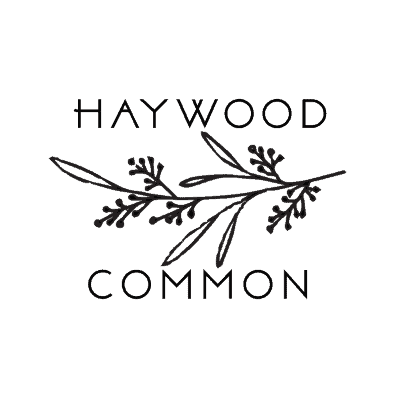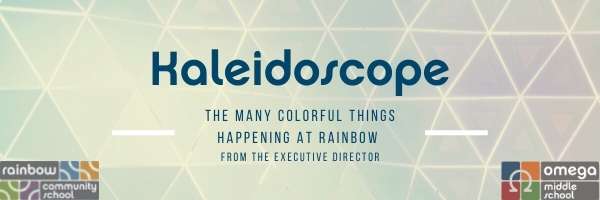
by Susie Fahrer | Nov 1, 2021 | Blogs, CEO's Kaleidoscope

October 2021 Kaleidoscope
The turn of the seasons is in full swing. The morning greets us with crisp autumn air and the afternoon sun provides a welcome warm up for outdoor activities. This time of year is filled with breathtaking beauty. A final burst of bounty before the stillness of winter. The natural flow of the seasons, each having its own turn in time, can be symbolic of our own rhythms for health and wellness.
This month’s Kaleidoscope* brings Rainbow’s focus on Health and Wellness to the forefront. In doing so, we provide an opportunity for reflection, contemplation, and progression.
Holistic Approach
Rainbow’s holistic approach to learning is at the heart of student wellness, especially as we learn to negotiate the evolving impacts of pandemic education. Our student’s social and emotional needs are nurtured through strategies like providing adequate time for transitions, breaks, and play. Leading with a lens on holistic wellness helps to counterbalance the cultural narrative that schools must “make up for lost time.” Instead, Rainbow is taking the time to attune with our students, and build a responsive and responsible approach focused on growth. This helps us calibrate our learning environment with the children’s current needs preserving their sacred relationship with life long learning.
- Gathering benchmarks and data is another way that we are building an approach that is responsive and relevant. Teachers will be releasing progress reports to families in November with Parent Teacher Conferences (November 22-23rd) serving as a tool for individualized discussion and follow up.
- Our Wednesday training schedule is a critical resource enabling time to focus on best practices in the classroom. On Wednesday afternoons, teachers collaborate and innovate, cultivating a dynamic experience for our students.
- A Rainbow education inspires students to achieve in the present, and prepares them for life long learning. Our engaging Middle School program features rich and meaningful course work, diverse elective experiences, outstanding educators, and a finely crafted curriculum fostering adolescent thriving. Come learn more and hear from our insightful alumni about the transition from Omega Middle School to their High School of choice. This is one of the most powerful ways to understand the value of completing the Rainbow journey through 8th grade. Join us on November 9th from 6:30-8:00pm. RSVP to the event here.
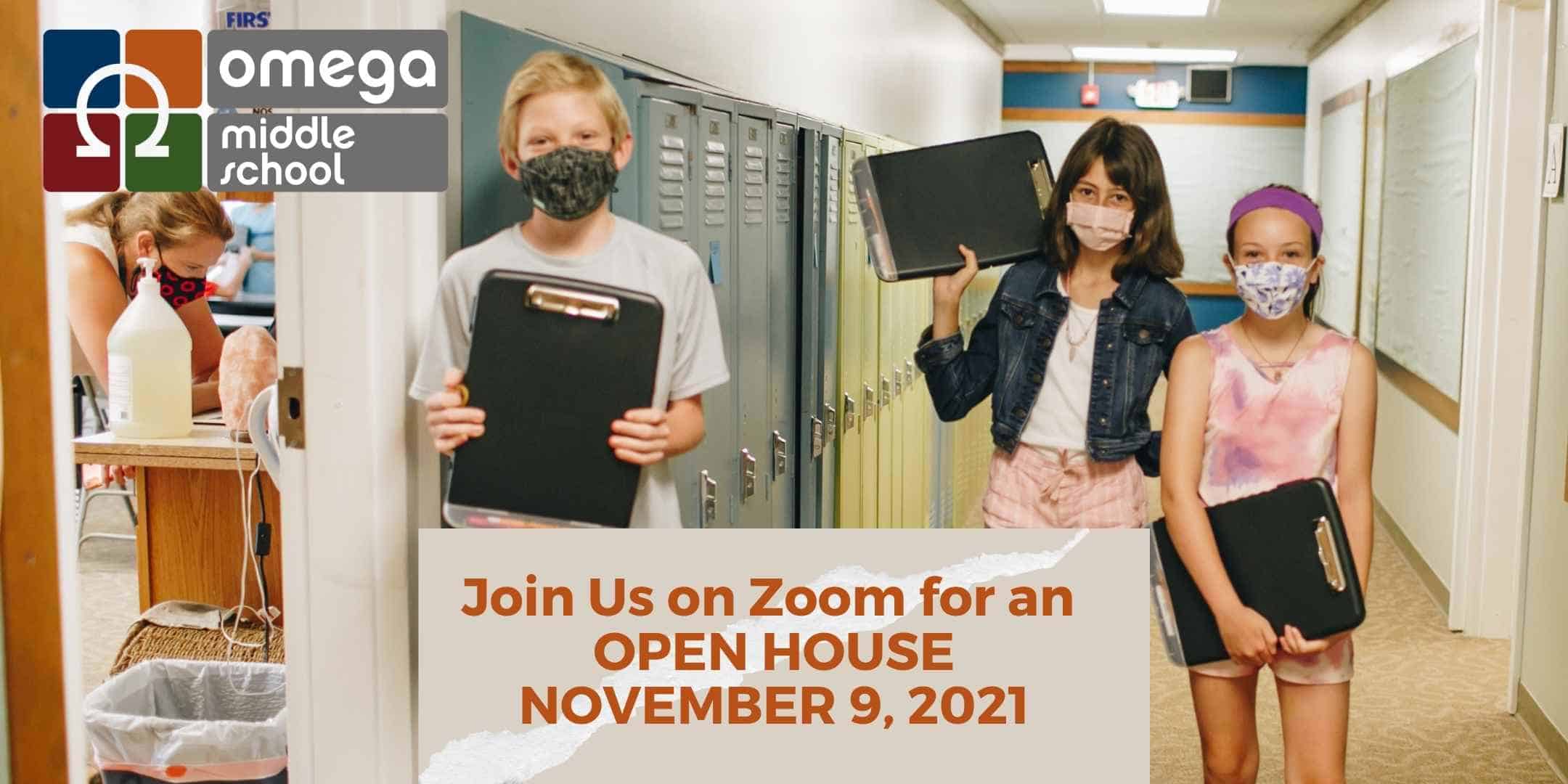
Social and Emotional Domains
The social and emotional domains are integrated in every classroom, and we have a fantastic team of counselors to support the teachers, students, and families when the need for more personal care is present.
- The counseling team includes Will Ray, Mark Ackerman, and Jamie Rischitelli. They have coordinated their schedules so that we always have a counselor on campus. The Counseling Program is available for general support in the classrooms, and can provide more personalized sessions for students and families as needed.
- Additionally, we are launching Affinity Groups for our BIPOC students in November. Several emails have been shared about the details of this initiative. Most importantly, it furthers our investment in cultivating a diverse community that also experiences a culture of belonging and connection.
- In the spirit of inclusion and wellness, Rainbow is in the process of establishing a Pronoun policy. This is currently being reviewed through various Dynamic Governance circles and will be shared with the community as soon as it is finalized. This policy brings visibility and transparency to establishing a culture of safety, sincerity, and allyship.
Culture of Engagement
A culture of engagement creates a community that is connected, collaborative, and compassionate. Since the launch of the school year, there have been several highlights within our community exemplifying this value.
- The Rainbow Community School Board put together a video explaining their role in the long term success of our school. The Board is an outstanding group of volunteers that guides the school’s future planning in partnership with the Executive Director. They are an integral part of our governance model and a resounding source of support to Administrative leadership.
- Additionally, our Parent council is a governing circle whose primary function is to help community relationships flourish. From teacher lunches to initiating class gatherings, their impact is powerful and appreciated. The meetings are open and anyone is welcome.
- Joining a circle is another way to invest in Rainbow. Our circle meetings are published in Rainbow Reminders, and are open for anyone to join.
- In the spirit of celebrating community engagement, we are planning to reinvigorate a tracking system for volunteer hours. This will help support efforts directed at outside funding and grant opportunities. More details will be shared in an upcoming Rainbow Reminders.
Health and Safety
Along with emotional wellbeing, our physical safety is a top priority at Rainbow. This includes continued reflection on our Covid Mitigations aligning ourselves with best practices and relevant data.
- Our pool testing program has been running for the past two weeks. The students and teachers have quickly adapted to this routine and we move efficiently through the process. So far, the pool reports have been negative. We will only send out notification and next steps if a positive pool is received.
- At the start of school, our mitigation strategies were built in alignment with CDC guidance. Additionally, the context of high infection rates, a fully in person model that included our largest cohorts since the beginning of the pandemic (Preschool, K-2, 3-5, and 6-8), and the return of the Rainbow’s End program informed a structured and cautious launch. Despite these significant changes, we have experienced great success to date. As a result, we are reviewing our mitigation guidelines to consider shifting our masking protocols outdoors and exploring more long term adaptations, as vaccination becomes an option for more of our student body.
- To help us explore the landscape as it relates to Rainbow Community School and Omega Middle School, we are asking that all families complete THIS SURVEY.
Please have your information completed by November 2, 2021.
Yours In Partnership and Gratitude,
Susie Fahrer
Executive Director
*Communication is central to the success of our community. In collaboration with weekly publications like Rainbow Reminders and regular classroom newsletters, Kaleidoscope captures the bigger picture of what is happening on campus and exciting news for Rainbow’s future.

by Susie Fahrer | Feb 23, 2021 | Blogs, CEO's Kaleidoscope, Director's Blog, Publications
Kaleidoscope – January 2021
We are excited to dig into the Pollyanna Racial Literacy Curriculum where every voice counts, particularly those that are least often heard. We are using this curriculum as a supplement to what we already teach and it so naturally fits into our ongoing efforts for a holistic education. We encourage you to review the Pollyanna Parent/Guardian Guide to get a better understanding of what your student will be learning. – Danae Aicher, Equity Director
Dear Rainbow Friends and Families,
I hope that 2021 brings many blessings to you and your family. It marks a new beginning. It is one of many new year cycles that lend itself to reflective and visionary thinking. At the school level this is a midway point. It is a natural fulcrum upon which we balance looking back at what we have accomplished and learned, and looking ahead to the possibilities and intentions for the future.
Looking back, the gravity of 2020 is powerful in both its own right and in the ways it surfaced for some, and reinforced for others, the collective influence of our nation’s history on our modern experience. Our obligation to analyze Rainbow’s equity efforts, and to reckon with our evolution of impact, became exceedingly clear during a thriving pandemic and racial tensions. This work is never done, but the more we centralize it, the more it will be internalized individually and systemically.
Naming a commitment to social justice in our mission statement and establishing ourselves as an Affirmative Action school are foundational efforts. These ideas are continually revisited to ensure their integrity. Additionally, the work of building the structures, systems, and culture of an institution that lives these principles is an active role we all play regularly. This Kaleidoscope is dedicated to surfacing several of the elements that comprise our current progress in offering a humane and decolonized educational experience for our families and children.
Below Danae Aicher, our Equity Director, speaks to the power of embedding our institutional work within the larger context of national events.
There’s an old saying that if you want to make God laugh, tell him your plans. The idea is that the universe will always test our commitment to whatever it is we declare we want to do.
Like so many other organizations, we here at Rainbow, have declared our commitment to equity. Equity is trendy. So much is going on in the world around us that lots of people are getting on board, anxious for some way to affect change. The ideological shift to equity is challenging all by itself. Rainbow has done that. For us, the challenge is (and will continue to be)… How do we live our mission?
The last year has really tested us. COVID put a spotlight on the cracks through which too many of our students and families are getting caught. And even as we work overtime to adapt to the changes we have to make in order to provide the best version of a Rainbow education that we can, we know that our models simply don’t work for those who are most vulnerable. Fortunately, we do not believe that pandemic education will last forever. Inherent in this pause is the obligation that we build back our educational programming with a lens on systemic and institutional norms that are in service to all students, families and staff. For further transparency, our Strategic Plan names benchmarks we are working to achieve in the next five years.
This summer, another series of murders of Black people, The Black Lives Matter protests that swept across the country, and the political rhetoric we witnessed opposing them, shone another spotlight; a spotlight on a deep racial divide of experience in this country. Many of our white parents woke to a calling for new awareness and answered that call by engaging in honest and sometimes painful discussions with each other as well as with some of our parents of color and parents of students of color. Attendance at events like Talking to Kids About Race and White Supremacy and Me Discussion Groups, and participation in Equity Circle are examples of this work. Out of this, we are watching families develop deeper relationships and bringing us more into community with one another. Furthermore, some of you are asking profound questions of us and pushing us to have greater imagination about what it means to “develop accomplished, confident, and creative learners who are prepared to be compassionate leaders in building a socially just, spiritually connected, and environmentally sustainable world.”
That mission feels especially important right now. We witnessed a horrifying scene last week. While we are not a political organization, we are one that collectively seeks to honor the whole body. That is what it means to be holistic. We cannot honor the whole without telling the truth. Terrorism is defined as “the unlawful use of violence and intimidation, especially against civilians, in the pursuit of political aims.” Insurrection is defined as “a violent uprising against an authority or government”. On January 6, we witnessed a terrorist insurrection. While there’s shock and sadness for many of us, let’s keep in mind that for some in our community there was less shock and more expectation- an understanding that this has been part of the duality of our country. And the fear and worry is not esoteric or theoretical or even political; it is an everyday lived experience of having to always be aware of one’s surroundings, who is around, and who can be trusted if they face physical harm. We live in two Americas and none of us wants to continue that.
That is why it is so important that we develop a broader curriculum for our students, one that encourages curiosity, sensitivity, cultural awareness, and critical thinking. Our Omega curriculum, and the required Equity Elective offer students the chance to examine our history and our present, find the inconsistencies in our ideals, and find the moments of great leadership beyond the common “heroes”. What lessons can they take from that and model in their own lives?
We are excited to dig into the Pollyanna Racial Literacy Curriculum where every voice counts, particularly those that are least often heard. We are using this curriculum as a supplement to what we already teach and it so naturally fits into our ongoing efforts for a holistic education. We encourage you to review the Pollyanna Parent/Guardian Guide to get a better understanding of what your student will be learning.
As we approach re-enrollment season, it is an opportune time to consider what it means to commit to Affirmative Action as a school community. One aspect is weighted admission, meaning preference is given to children and families of color that would like to join our school community. Of course, this is just the beginning. We need to ensure that once a family or child of color joins our community, we apply every effort to create a climate of inclusion and belonging. Affirmative Action means we exercise the right to interpret and apply policies differently for children and families of color. As Michelle Alexander, author of The New Jim Crow, explains, “Treating different things the same can generate as much inequality as treating the same things differently.” A commitment to Affirmative Action implies that when we build a culture of equity, instead of equality, we all benefit because our needs are met in compliance with our individualized experiences.
While not a specific example of Affirmative Action, the 6th grade classroom currently provides a prime example of applying a policy differently to a subset of our population. Grade six has been an anomaly this year because a large number of students enrolled in fully remote education. It has reached a point that we are able to defer the cohort model, and offer fully in person learning for the eleven eligible families, until February 26th when the next round of re-enrollment decisions are made. In addition, we are able to offer fully in person learning to the two siblings of 6th graders that attend Omega ⅞ programming. Unfortunately, we are not able to make this same offer for the siblings at the elementary level, because our resources are different. The 6th grade parents consented to this decision, highlighting a community that understands that we should not prevent optimal learning circumstances for some, simply because we cannot provide them for all. That being said, we all experience indirect benefits of this opportunity that will pave the way for further reintegration to weekly in person learning as it is safe and viable for other parts of our institution.
Kate Brantley and I are participating in Whiteness At Work. It is a four part training series designed to dismantle norms influenced by white dominant culture that impede the success of building a safe diverse working environment. While the Pollyanna curriculum focuses on a ground up approach to equity through educating our children, this type of analysis ensures the equity lens is utilized with a comprehensive, systemic, and long term vision intact. This includes hiring practices, evaluation systems, daily work conditions, and more. Fortunately, this is not the task of administration alone. Our Dynamic Governance structure provides ample opportunity for systemic change to be fostered through collective community action. We are stronger together.
As we look ahead to the 21-22 school year, there is so much hope. Not simply for a comprehensive response to the pandemic and social unrest of 2020, but for the potential of an inspired reimaging of what is possible within and beyond our community and classrooms. Our conversation about equity is ongoing, and we will always be working to create and maintain a more equitable school community.
On January 26th, we will be hosting a school wide meeting to offer a look at Rainbow’s future. I look forward to engaging in a hope-filled conversation with you all at that time. More details about this event will be shared in upcoming Rainbow Reminders and classroom Newsletters.
It is my sincerest pleasure to be entering a new year with each of you. May we continue to build trust, dialogue, and community in the journey ahead.
In Love,
Susie Fahrer
Executive Director
Rainbow Community School and Omega Middle School

by West | Mar 8, 2018 | Blogs, Home Page News, Rainbow Institute
We live in a time of uncertainty, in a world that is unpredictable and in a society that is, in some cases, changing rapidly and in others stuck. Nevertheless, our work as educators is more important now than ever.
As an organization, we aim to live our mission everyday. Some days we do so effortlessly and seamlessly. Other days we detour, stumble and struggle. Many days yield cheer and celebration, yet many yield mistakes and misunderstanding. Regardless of the outcomes, we see them ALL as an opportunity to deeply reflect, adapt and grow.
We are an organization on a transformational journey informed by these opportunities, guided by our hearts and our spirits and fueled by our mission.
We develop accomplished, confident, and creative learners who are prepared to be compassionate leaders in building a socially just, spiritually connected, and environmentally sustainable world.
As a teacher, to live this mission means that you are intentional about circling back to it and that you are willing to hold a mirror up to your classroom culture and programming. These opportunities often show up in unexpected ways but, if you are waiting with that mirror, some amazing learning can happen.
Spirit Week at RCS
Next week is Spirit Week at RCS. This week fills our school classrooms, campus and culture with fellowship and fun. It invites costumes, and creativity while building community. As Student Council began to flesh out the daily Spirit Week themes, they stumbled on an opportunity- a real teachable moment. In an effort to give this teachable moment greater context, our Equity Director wrote a letter to our families.
“In the interest of our ongoing efforts to be more mindful of equity, we are eliminating ‘Crazy Hair Day’ from our Spirit Week schedule. There are a couple of concerns about this practice. To begin with, the regular and loose use of the term ‘crazy’ is disrespectful to those who live and struggle with mental illness. Even if we are innocently using the term to refer to something that is different and/or weird, we need to ask ourselves if that’s really the message we want to send about hair. While there are some really cute and elaborate ideas out there for ‘Crazy Hair Day’, all too often, the expressions that come out of this Spirit Week practice are styles that closely resemble (intentionally or not) actual cultural and ethnic hairstyles. The suggestion that those styles are crazy or weird is offensive. Would it be ‘crazy hair’ if a child with curly hair came to school with their hair straightened for the day?
Here at Rainbow, equity is a practice. So we’re using this as a teachable moment for our students. Some of your teachers are taking this time to talk about culture and cultural practices, and concepts of ‘different’ vs. ‘weird’. If you want to continue these discussions at home and feel like you could use some supportive material, please reach out to our Equity Director. In addition, HERE is a link to a very thoughtful post from a parent about ‘Crazy Hair Day’.
Teachable Moments
This topic became inspiration for a 4th grade centering practice. Centering began when the class found stillness and silence. The candle was then lit for “safety” and the teacher began, “Yesterday we talked about physical safety and today we will talk about emotional safety.”
Susie, the teacher, followed by asking for a volunteer to read Rainbow’s mission statement. She then asked, “Where does this come from?” The kids responded, “The School!” She explained that this was our mission statement and ultimately our hope for each action, every day.
Around the altar were the words Ethnic and Culture. The teacher asked the students what these words meant to them. As a group, the kids built collaborative definitions and came to some common understandings of each word. Susie then revealed a final sheet of paper with the phrase ‘Crazy Hair Day’ written on it and began touching on some of the concepts that were explained in the above letter. Finally, she began showing the group images of hairstyles that were based on the cultural or ethnic backgrounds of the people pictured.
These images were passed around the circle in silence. The students were asked to simply use their powers of observation, acknowledge any reactions, consider the terms ‘ethnic’ and ‘culture’ while making mental notes as they cycled through each image.

In closing, Susie asked to kids to try to weave all the centering elements together and identify the message that she was trying to share with them. One child responded,”By saying something or someone is crazy, you are judging them.” Another student said, “The things that may be fun for me, like crazy hair day, could really hurt someone else. This might be the way they do things and if you make fun of them, it could hurt their feelings.” Another child said, “What you might consider crazy hair for you may be they way that others wear their hair everyday.” One noted that, “Yesterday we talked about how some cultures greet people in different ways we should think about how some people wear their hair in different ways.” Susie ended with a simple statement about how we, for the last several years have been hosting Crazy Hair Day and upon reflection and insight we have realized that this choice does not fit within our mission statement. As a community, we decided to let go of it because we strive for emotional safety for all.
Now what?
Consider your personal mission statement or that of your school or organization. Reflect…
What are you doing to successfully achieve this mission? Celebrate that!
Now consider, how can those mission statement words be better represented with action?
What changes to your direct practice can open up pathways of learning for you, your family and/or your students?

by Admin | Apr 13, 2017 | Blogs
Next Thursday we have the honor of hosting Building Bridges of Asheville in partnership with the YWCA of Asheville for a panel discussion on how the paradigm of both racial oppression and racial equity has shifted over the last 25 years. Come listen to Building Bridges members, including RCS Equity Director, Danae Jones Aicher, share their stories of persistent resistance and courageous change making!
This event is free and open to the public. It will take place from 6pm to 8pm in the Rainbow Community Center at 62 State Street, Asheville NC 28806. More information about childcare is coming soon. For more information visit the How Racism Has Changed Over 25 Years Facebook Event or email danae.aicher@rainbowlearning.org.
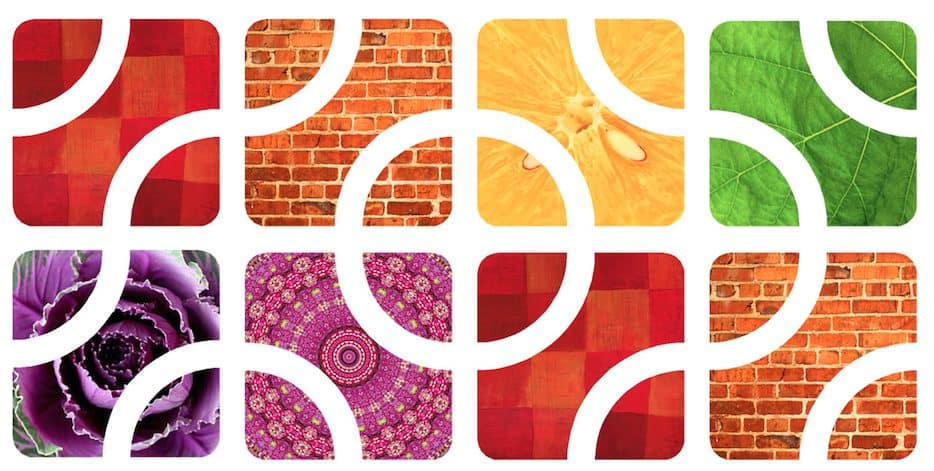
by Jessy Tickle | Dec 5, 2016 | Blogs, CEO's Kaleidoscope, Director's Blog, Publications
 Kaleidoscope, November 2016
Kaleidoscope, November 2016
Unfortunately, it has been too long since I have written you. I meant to release an edition of Kaleidoscope in early November, but, frankly, the election put me off-kilter. And with all the smoke in the air, it felt like the world was on fire.
Thanksgiving break was an important time to gather spiritual strength–to remember that love will always see us through.
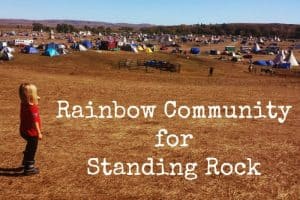 While most of us were enjoying the comfort of our home with loved ones during Thanksgiving, two Rainbow families sacrificed comfort and safety to stand for something they believed in. Caryn and Bob Hanna with their 5th grader Bryce and RCS alumnus, Danielle, along with Wendy Sause and her two children, Elijah and Bronwyn (also RCS alumni) made their way to Standing Rock to support the native people there and to advocate for a dream of the earth, as Thomas Berry calls it – a dream that is actually about waking up. A dream where we wake up to the reality of the earth and our place within it. Humans are made of the same elements of earth. We ARE earth, and to destroy her is suicide. It is hard to wake a slumbering giant that is accustomed to the comforts of sleep. I still feel groggy, but every day, the children help to wake me up. They have a dream of the earth. They believe in earth’s endless abundance and ability to provide all they need for their future, including clean water. Thank you everyone who contributed to the Rainbow Warrior campaign to bring supplies up to Standing Rock. Your children and grandchildren thank you. Personally, when my grandchildren are grown and ask, “What did you do to save the earth?” I hope to have a response.
While most of us were enjoying the comfort of our home with loved ones during Thanksgiving, two Rainbow families sacrificed comfort and safety to stand for something they believed in. Caryn and Bob Hanna with their 5th grader Bryce and RCS alumnus, Danielle, along with Wendy Sause and her two children, Elijah and Bronwyn (also RCS alumni) made their way to Standing Rock to support the native people there and to advocate for a dream of the earth, as Thomas Berry calls it – a dream that is actually about waking up. A dream where we wake up to the reality of the earth and our place within it. Humans are made of the same elements of earth. We ARE earth, and to destroy her is suicide. It is hard to wake a slumbering giant that is accustomed to the comforts of sleep. I still feel groggy, but every day, the children help to wake me up. They have a dream of the earth. They believe in earth’s endless abundance and ability to provide all they need for their future, including clean water. Thank you everyone who contributed to the Rainbow Warrior campaign to bring supplies up to Standing Rock. Your children and grandchildren thank you. Personally, when my grandchildren are grown and ask, “What did you do to save the earth?” I hope to have a response.
Pollinating a flowering community
If you haven’t donated to the annual campaign yet, now is the time. A pollinator (volunteer fundraiser) will be calling you in the next few days. It will feel good to tell them, “I already donated, thanks!” There is no greater cause to donate to than your children and your community. Your donation keeps Rainbow flourishing.
Rainbow is branching out
In late October, six faculty members traveled to Cleveland, Ohio, to present at the Spirituality in Education conference. We presented the Rainbow Seven Domains learning model, and we gave a session on centering. Both were very well received. Upon reflection, Eddy Webb, second grade teacher, said that presenting at the conference made him realize how much what we do at Rainbow is needed. It inspired him to be on the Rainbow Institute Advisory Team, which has its first meeting today; Tuesday, November 29 at 5pm. RI is a new arm of Rainbow that is dedicated to being a resource and a stimulus for a holistic education revolution, in the belief that holistic education leads to human flourishing. The main activities of the Institute will be educating adults, namely teachers, in holistic methods. We believe that every child has the right to have access to a loving, holistic education. The goal of the institute is to make that possible by spreading it. If you would like to be on the Rainbow Institute advisory team, you are welcome to attend the meeting.
I considered our More Than Mindfulness conference on October 12th as the launching of the Rainbow Institute. Judging from the returned surveys, it was a beautiful success, and participants are hungry to learn more about how they can bring holistic education into their classrooms. The conference was primarily attended by college professors, mental health professionals, and teachers from charter, public, and private schools. Many attendees commented on how marvelous your children were in the classroom as they observed centering. Mountain Xpress did a great article on the conference: http://mountainx.com/living/education-as-a-sacred-art/.
More Expansion
Rainbow Institute is a conceptual expansion, but we are also expanding physically. We completed the purchased of the ½ acre at 29 Allen Street, and renovations will be complete soon. The 3/2 house will be available to rent for $1800/month, OBO. Of course, we would love to rent it to a Rainbow family if you or anyone you know is looking for a property walking distance from the school.
Planning for the Future
Board member, Darrah Noble, is heading up a new Rainbow facilities design team with the purpose of planning for our future. How will we complete our arts facilities and one-day hopefully have room for expanding grades? When will after-school have a permanent building? These are a few pieces of the puzzle they hope to solve. If you want to be on this committee, please let the office know.
Wellbeing requires effort
October 26 and 27, I had the honor of being invited to Chicago to work with 25 other leaders from around the country on a design for a National Children’s Wellbeing Initiative. The Initiative is a partnership between Ashoka and the Robert Wood Johnson Foundation, one of our nation’s largest and most influential foundations. To my delight, this model for children’s wellbeing is holistic, including spirituality. It recognizes that wellbeing is about more than physical needs (the very bottom of Maslow’s hierarchy), but that every child deserves a healthy inner life. The Robert Wood Johnson Foundation would like the holistic child wellbeing model to be implemented broadly in multiple sectors, including education, health, mental health, social services, and even entertainment. Therefore, they invited national public health officials, PhD’s in diverse fields, award-winning social entrepreneurs, and even people from children’s entertainment (a vice president from Sesame Street) to work on this important initiative. Imagine if all children could grow up with wellbeing, what a wonderful world it would be.
Social Justice requires intentionality
Since adding “social justice” to our mission statement, the cry for justice has resounded even louder around us. As you know, I am currently a doctoral student at Columbia Teachers College. I recently received a letter from the faculty of the college that spoke to their commitment to social justice. It is so well-written that I share part of it with you (with some edits). Please read it as if it were written directly on behalf of the sentiment of the Rainbow faculty:
As faculty, we work at an institution with a commitment to social justice and we value this commitment now more than ever. We must first recognize that the acts of hate are not a new era in U.S. history. The struggle to actualize rights is ongoing for many people. The United States has a long history of racism, xenophobia, and misogyny. For example, even as the 15th amendment was added to the U.S. constitution, Black people continued to be positioned as disposable, being criminalized and removed from civil society. The impact of mass incarceration on black and brown communities, anti-Muslim sentiment, and transphobic policies reflect the everyday lived struggles of our peers and community members.
This is a moment to regroup. It is a time to speak out against hate and to reaffirm our commitment to a more just and equitable society. We need more than ever to see ourselves as a large and diverse but uneven community and come together for one another. We must take a hard look at ourselves, our own assumptions and prejudices, the effects of our own actions and inactions, and what we have been willing to live with. On an everyday level, this will mean, particularly for those in more privileged positions, watching out for acts of prejudice and hate (both implicit and explicit) and intervening to protect and support people who are targeted. This means we will keep our doors open to support students, faculty, and broader community members who feel targeted. This means expanding our practices to be more mindful of our discourse and the way in which we engage with others. And this means doing more to support change in our classrooms and community. This involves educating ourselves and taking action against institutions and policies that seek to remove or interfere with the rights of historically marginalized groups. As faculty, we express our concern and realize we must do the same that we ask of you.
There is only one certainty in our work as social justice advocates–and that is our commitment and action towards equity and protection of vulnerable populations. We hope to attend to this commitment with renewed zeal and energy.
With that, I sign off on this Kaleidoscope. Thank you for reading. It means so much to be a part of a community that is constantly working toward human flourishing and fulfillment. It is a balancing act to have anger about injustice, yet be peaceful in one’s heart and work productively toward good. Some call this balance “blessed unrest.” As always, our children inspire us every day to strike a balance – to maintain blessed unrest. It is for them we do this work, and it is because of them, we are fulfilled by it.









 Kaleidoscope, November 2016
Kaleidoscope, November 2016 While most of us were enjoying the comfort of our home with loved ones during Thanksgiving, two Rainbow families sacrificed comfort and safety to stand for something they believed in. Caryn and Bob Hanna with their 5th grader Bryce and RCS alumnus, Danielle, along with Wendy Sause and her two children, Elijah and Bronwyn (also RCS alumni) made their way to Standing Rock to support the native people there and to advocate for a dream of the earth, as Thomas Berry calls it – a dream that is actually about waking up. A dream where we wake up to the reality of the earth and our place within it. Humans are made of the same elements of earth. We ARE earth, and to destroy her is suicide. It is hard to wake a slumbering giant that is accustomed to the comforts of sleep. I still feel groggy, but every day, the children help to wake me up. They have a dream of the earth. They believe in earth’s endless abundance and ability to provide all they need for their future, including clean water. Thank you everyone who contributed to the Rainbow Warrior campaign to bring supplies up to Standing Rock. Your children and grandchildren thank you. Personally, when my grandchildren are grown and ask, “What did you do to save the earth?” I hope to have a response.
While most of us were enjoying the comfort of our home with loved ones during Thanksgiving, two Rainbow families sacrificed comfort and safety to stand for something they believed in. Caryn and Bob Hanna with their 5th grader Bryce and RCS alumnus, Danielle, along with Wendy Sause and her two children, Elijah and Bronwyn (also RCS alumni) made their way to Standing Rock to support the native people there and to advocate for a dream of the earth, as Thomas Berry calls it – a dream that is actually about waking up. A dream where we wake up to the reality of the earth and our place within it. Humans are made of the same elements of earth. We ARE earth, and to destroy her is suicide. It is hard to wake a slumbering giant that is accustomed to the comforts of sleep. I still feel groggy, but every day, the children help to wake me up. They have a dream of the earth. They believe in earth’s endless abundance and ability to provide all they need for their future, including clean water. Thank you everyone who contributed to the Rainbow Warrior campaign to bring supplies up to Standing Rock. Your children and grandchildren thank you. Personally, when my grandchildren are grown and ask, “What did you do to save the earth?” I hope to have a response.



